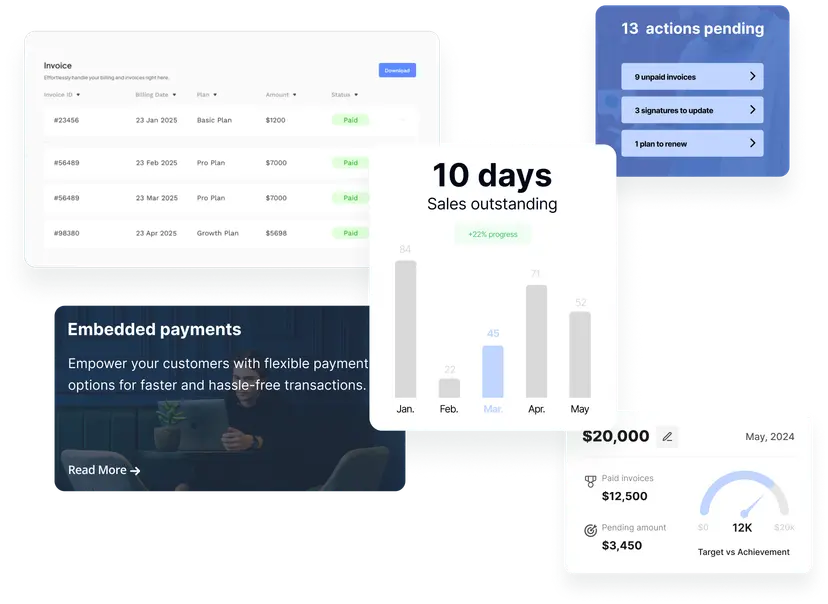How AR Automation Improves Business Liquidity
Ahow AR automation improves liquidity or ways to improve cash flow and working capital using automation? You’re in the right place. Automating accounts receivable (AR) is transforming business finance by streamlining manual processes, reducing errors, and accelerating payments. This comprehensive article answers key user questions, integrates leading search keywords, and highlights how Upfront—a modern AR automation platform—helps businesses get paid faster and boost liquidity.
Managing accounts receivable (AR) effectively is essential to maintaining healthy cash flow and ensuring financial stability. However, for many businesses, outdated and manual AR processes create bottlenecks that hurt liquidity. The solution? AR automation—a technology that streamlines AR management, speeds up collections, and optimizes working capital.
This article explores how AR automation, specifically through tools like Upfront, improves liquidity, reduces Days Sales Outstanding (DSO), and strengthens financial management. Whether you’re running a small business or a larger enterprise, you’ll learn why automating accounts receivable is a must for smarter cash flow management.
What Is Business Liquidity ?
Business liquidity refers to the ability of a company to convert its assets into cash quickly to meet short-term financial obligations such as payroll, utilities, and supplier payments. Liquidity is vital for maintaining day-to-day operations and seizing growth opportunities.
Without sufficient liquidity, businesses face challenges like delayed payments to vendors, strained cash flow, and reliance on expensive credit—issues that can snowball into financial instability. By improving AR processes, businesses can ensure cash is available when needed, improving their overall financial health.
What is the relationship between liquidity and accounts receivable?
Accounts receivable plays a key role in liquidity management. When customers delay payments, the cash that should be fueling daily operations remains inaccessible. Poor AR management leads to extended DSO, increased reliance on external financing, and limited working capital.
This is where AR automation shines. By automating the invoicing, payment tracking, and collection processes, businesses can improve cash flow, reduce payment delays, and optimize working capital.
How AR Automation Improves Business Liquidity
AR automation platforms like UPFRONT enable faster, more efficient accounts receivable processes, directly improving liquidity. Here’s how it works:
1. Faster Invoice & Payment Processing
Automated systems generate and send invoices immediately after a sale, eliminating manual delays. Payment reminders and digital payment options further speed up the collection process, giving businesses quicker access to cash.
2. Proactive Payment Follow-Ups
Automated reminders ensure customers are nudged about upcoming or overdue payments without the need for constant manual effort. This reduces the risk of late payments and enhances collection efficiency.
3. Real-Time AR Analytics
AR automation tools provide dashboards and reports that offer instant insights into outstanding invoices, collection trends, and customer payment patterns. This allows businesses to forecast cash flow with greater accuracy.
4. DSO Reduction Strategies
Days Sales Outstanding (DSO) measures the average time taken to collect payments after a sale. High DSO is a liquidity drain, tying up working capital. By streamlining invoicing, follow-ups, and dispute resolution, AR automation shortens DSO and accelerates cash inflows.
5. Cash Flow Optimization
Automation minimizes cash flow gaps by ensuring timely payments and predictable receivable cycles. Improved collection processes reduce dependency on credit, saving on interest costs and improving overall financial flexibility.
What’s AR Automation KPIs?
The right AR automation tools don’t just solve operational challenges—they deliver measurable financial benefits. Implementing platforms like Upfront can lead to significant improvements in these key performance indicators (KPIs):
- DSO: Shorter DSO through faster collections directly boosts liquidity.
- Cash Conversion Cycle: Quicker conversion of sales into cash enhances cash flow reliability.
- Collection Effectiveness Index (CEI): Efficient collections lower overdue receivables and improve financial stability.
- Cash Flow Forecast Accuracy: Real-time data makes predictions more reliable and actionable.
Can Automating Accounts Receivable Lower DSO?
A common question is: Can automating accounts receivable reduce DSO? The answer is a resounding yes. DSO (Days Sales Outstanding) measures how long it takes for you to collect payment from customers. High DSO ties up cash and indicates poor liquidity.
With AR automation such as Upfront, you benefit from:
Consistent Automated Follow-Ups: Ensure customers are reminded to pay on time, decreasing collection cycles.
Faster Dispute Resolution with Real-Time AR Analytics :Quick handling of disputes using centralized data means payments arrive sooner.
Personalized DSO Reduction Strategies : Identify patterns and create targeted solutions to minimize overdue accounts.
Implementing DSO reduction strategies through automation results in more available cash, better working capital optimization, and an overall healthier financial position.
What Is the Link Between AR Automation and Working Capital Optimization?
What is the connection between AR and working capital? Working capital represents your ability to meet short-term obligations and fund day-to-day business. Accounts receivable is a critical component of working capital—when you automate AR, you’re directly contributing to working capital optimization.
Quicker Collections Free Up Cash
The faster you collect receivables, the more efficiently you can operate or invest in business growth.
Automate Accounts Receivable to Streamline Processes
Reduce the manual burden on your finance team and ensure your capital is always working for you.
Seamless Integration with Liquidity Management Tools
we at Upfront provide actionable insights and automate routine tasks, giving businesses confidence in their financial outlook.
How Does Poor AR Management Hurt Liquidity?
Poor AR management leads to slower payments, manual errors, and missed opportunities, ultimately undermining liquidity. Some consequences include:
- Higher dependency on short-term credit or loans
- Missed chances for expansion due to cash shortages
- Increased risk of overdue payments turning into bad debt or insolvency
Adopting AR automation mitigates these risks by shortening payment cycles and providing real-time data for better decisions.
Why Choose Upfront for AR Automation?
Upfront is a cutting-edge AR automation platform designed to help businesses improve liquidity, optimize working capital, and streamline accounts receivable operations.
Key Features of UPFRONT:
- Digital Invoice Automation: Generate invoices instantly and reduce delays.
- Real-Time AR Analytics: Access detailed insights into cash flow, payment trends, and customer behavior.
- Payment Reminders and Alerts: Ensure timely collections with automated, customizable reminders.
- Seamless Integration: Connects easily with your accounting systems like QuickBooks and Zoho.
- Scalability and Affordability: Designed for businesses of all sizes, including small businesses seeking cost-effective solutions.
Benefits for Small Businesses
Small businesses often fear automation costs, but platforms like Upfront are scalable and budget-friendly. Automating AR processes saves time, reduces errors, and improves cash flow stability, making it a strategic investment for growth.
AR Automation vs. Manual AR – The Liquidity Scorecard
| Liquidity Factor | Manual AR Impact | Automated AR Impact |
| Days Sales Outstanding (DSO) | Often High (Slow process) | Much Lower (Faster cycle) |
| Cash Conversion Cycle (CCC) | Longer (High DSO drags it out) | Shorter (Lower DSO speeds it up) |
| Working Capital Needs | Higher (More cash stuck in receivables) | Lower (Cash freed up!) |
| Cash Flow Predictability | Lower (Hard to guess when payments will land) | Higher (Collections are more consistent) |
| Business Liquidity | Often Strained | Boosted / Much Healthier |
Frequently Asked Questions About AR Automation and Liquidity
How does a company improve liquidity?
A company can improve liquidity by adopting strategies that accelerate cash inflow and optimize cash management. Key methods include:
- Implementing AR Automation: Automating accounts receivable processes speeds up invoicing, payment reminders, and collections, resulting in faster payments from customers.
- Reducing Days Sales Outstanding (DSO): By consistently collecting payments on time and using DSO reduction strategies, companies can ensure that their cash is not tied up in unpaid invoices.
- Optimizing Working Capital: Managing all elements of working capital—accounts receivable, accounts payable, and inventory—ensures the business has enough liquid assets to meet obligations. Tools like real-time AR analytics and cash flow forecasting automation provide greater visibility and control.
- Using Modern Liquidity Management Tools: Platforms like Upfront help streamline AR workflows, improve collection efficiency, and deliver actionable insights for better financial decision-making.
Focusing on these approaches helps companies maintain strong liquidity, reduce the risk of cash shortages, and support ongoing business growth.
Why do accounts receivable improve the liquidity of the company?
When accounts receivable are managed efficiently, businesses collect payments from customers faster, which reduces Days Sales Outstanding (DSO). This quicker cash inflow increases available funds, strengthens liquidity, and ensures the company can meet its financial obligations without delay.
How does AR automation improve business liquidity?
AR automation streamlines invoicing, accelerates payment collection, and provides real-time AR analytics, all of which help businesses access cash faster for improved liquidity.
Can AR automation help with DSO reduction strategies?
Yes, automating accounts receivable ensures timely reminders and faster payment processing, leading to significant reductions in Days Sales Outstanding (DSO) and optimized cash flow.
What are the benefits of AR automation for working capital optimization?
Automating your receivables reduces the time cash is tied up in unpaid invoices, strengthening working capital and freeing up funds for growth or operations.
Is AR automation only for large corporations, or can small businesses benefit too?
AR automation platforms like Upfront are designed to be scalable and affordable, making them accessible to small businesses seeking business liquidity improvement and operational efficiency.
How do AR automation tools support cash flow forecasting automation?
By providing real-time data on outstanding receivables and payment trends, AR automation platforms enable more accurate cash flow forecasting and proactive liquidity management.
Start Boosting Liquidity Today with UPFRONT
Automating accounts receivable isn’t just about convenience—it’s about ensuring your business has the financial agility to thrive. By improving collections, reducing DSO, and optimizing working capital, AR automation platforms like Upfront equip businesses with the tools they need to maintain healthy liquidity.
Take the next step in transforming your financial processes with UPFRONT. Contact us today for a free demo and see how AR automation can change the way your business manages cash flow.
→ Cash flow mastery: AR/AP Automation UAE Strategy→ Liquidity unlocked: AR Automation UAE Liquidity→ 2025 advantage: Cash Flow Automation UAE→ Localized solutions: Benefits of AR Automation UAE→ Market-fit tools: Right AR Software UAE





